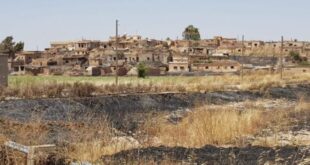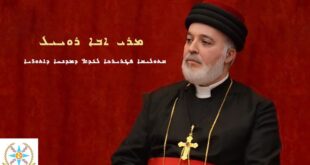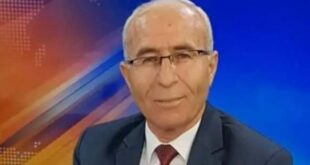Saturday, July 10, 2010
The members of our group are all connected in some way with the Hill Museum and Manuscript Library (HMML) in Collegeville, Minn. Since World War II, the library has been filming — and, more recently, digitalizing — endangered Christian manuscripts.
Benedictines for centuries have taken as part of their work the protection of religious manuscripts, especially. Not surprisingly, HMML has played a large role in the planning, execution and displaying of the Saint John’s Bible.
In Turkey and Syria, we’re visiting sites where HMML has already copied manuscripts and some where they’d like to. One of them is Mor Gabriel, a Syriac monastery where HMML has recently digitalized 300 manuscripts. Like the other sites we are visiting, Mor Gabriel is ancient — founded in 394 CE — and survives with only a few members and only in Turkey and Syria.

Older than Stonehenge by 6,000 years
This part of the world tells its age in thousands of years. On this day, in the morning we visited a startling archaeological find, Göbekli Tepe, that predates Stonehenge by 6.000 years.
Less than a decade ago, a Turkish shepherd happened upon strange stones hinting at a site that German archaeologist Klaus Schmidt, in a recent Smithsonian Magazine, declared to be the "first human-built holy place."

By mid-afternoon, the hot weather (over 100 degrees) made us eager to descend into Dara’s cool, underground cistern, 700 years old.
The Kurdish tourists and we eyed each other. We were wearing linen or cotton, as light and loose as possible. The Kurdish women wore long, polyester dresses, cinched at the waist. Veils, tightly wrapped, hid the hair of these women — except one, who had a renegade strand of orange hennaed hair sticking out. We tried — discreetly at first — to take photos, but spying us, the women eagerly asked for more. They gathered around Lois Rogers and Lyndel King, eager to see the photos.
A few of the Kurdish women ignored the cameras, paying more attention to Lyndel’s burnt sienna cotton scarf with tie-dyed circles. We could tell that they’d have been happy to swap headscarves.

The younger Kurdish girls — dressed like kids everywhere — asked our names and told us theirs in their school English, then erupt in embarrassed giggles when we replied and asked their ages.
We’re visiting from Minnesota and they were visiting from a village not too far away from the Roman site, and we’re all heirs to the same Roman traditions.
Cultural vaults
The local Dara people live in houses shaped — literally — by the past, with stones from the ruins and on top of what archaeologists call a "tell." We’ve seen them all over southern Turkey. Some, like Dara, host contemporary settlements; others are the actual physical remains of earlier settlements now long abandoned and covered over.
They all look like hillocks, but too regular in shape and too unusual in relation to their surroundings to be natural formations. Instead, they are cultural vaults where one civilization overlays another which overlays another, often topped with a living, contemporary settlement.

Ancient Christian churches
Turkey and Syria are the land of the Tigris and the Euphrates, of Ephesus and Cappadocia, of Constantinople and Antioch. It’s a land of sultans and pashas and the history of all of those who continue to live in the streets and hamams (Turkish baths) and mosques of modern Istanbul. The region also has a long Christian past as well, somewhat more disguised or spectral. The great mosque in Istanbul, the Hagia Sophia, grew out of a Christian basilica, the building’s cross-shape and wall mosaics upstairs give more than a hint of the mosque’s origins.
Turkey and Syria teach powerful lessons about the connections among place, memory, and story. Nowhere tells that story more poignantly than in the various Christian churches we’re visiting.
The long-ago abandoned Mor Augen monastery, for example, stands high above the Mesopotamian plain at the end of a newly paved entrance road. Some years ago the whole of the Christian population of a nearby Muslim-dominated village decamped to Germany for religious and economic reasons. Having prospered from better economic opportunities abroad, one of these families created a foundation to pave the road and to do some restoration.
As is the way in Turkey, new life is growing up around that monastery. We found at the site a plastic bucket with a rope next to a still useful well, plus a small garden that promised onions and tomatoes before long. If not actually living there, someone was making a life there.
After admiring her cloth alter paintings in several churches, we eagerly visited the art-packed apartment of needlework and painting artist Nasra Simmes Hindi. We’d especially admired those at the Syriac Orthodox Church of Mor Shemon, and in the contemporary art museum in Mardin, Turkey. She is the last practitioner of this traditional art form, which she learned from her master-artist father; her own daughter makes wine instead. A few days later, in a Syrian village, we met up with young girls selling their embroideries, some of which bore a bit of resemblance to Nasra Simmes Hindi’s work.

Blazing tires, angry Kurdish youth
Modern life interrupted our trip outside Nusaybin (ancient Nisibis) on the Syrian border when our bus emitted a loud popping sound and the driver took the first exit to find a service station. He didn’t know the city.
We turned down one street, smelled burning rubber, saw flames blazing high in the sky: tires set afire. Further down the street, boys had dug up a row of cobblestones, using them to barricade the street. They defiantly faced the bus, stones in hand. Luckily, another car came along; a man jumped out and yelled at the kids. After half-heartedly throwing a few stones at the bus, just to save face, they let us go through. Later we heard that some Kurdish diplomat was insulted, or hurt. We never heard the whole story, but we know we witnessed firsthand the anger and frustrations of the Kurds, a poor minority in Turkey.
Before we had left on our trip we read modern Turkish poet, Nazim Hikmet (1901-1963), a political prisoner in Turkey for 13 years, exiled for 13 more years. His work is banned in Turkey. In the Archaeological Museum in Istanbul, which contained a fine collection of books, a young clerk stopped still when Marge Barrett asked for the banned poet. "You read Nazim Hikmet?" Marge put her hand on her heart; the clerk smiling did too and touched Marge’s elbow. Walking away we heard the woman reverently say to her male colleague: "She reads Hikmet."
These clerks and the Kurdish boys called up Nazim’s lines: "and then my people, /ready to embrace/with the wide-eyed joy of children/anything modern, beautiful, and good — /my honest, hard-working, brave people,/ half full, half hungry, /half slaves…"
A demonstration in Istanbul
Just as our group fell into the Kurdish demonstration, Marge and Tom Barrett had encountered an earlier full-blown demonstration. They had arrived in Istanbul a few days before the HMML group convened. On their first day, Marge and Tom had walked the Old City with its marvelous Hagia Sophia, Blue Mosque, Topkapi Palace, Grand Bazaar. On the second day in the city, they set out for the newer section of town, to walk the main street of Istanbul into the symbolic heart of modern Turkey, Taksim Square. As they neared the square, they spotted hundreds of police cars parked at the entrance and police massed in full riot gear, plastic shields in front of them. As Marge had instinctively placed her hand over her heart for Nazim Hikmet, Tom instinctively reached for his i-phone camera. Marge whispered, "Don’t take a picture."
What they witnessed: thousands of folks, dressed in stylish western to ultra-conservative garbs, standing below the monuments of Ataturk and other revolutionary leaders. Turkish flags unfurled. A major loudspeaker projected the voices of speakers from a podium on the top of the monuments. Marge and Tom had not watched TV or read a paper since they’d come to Turkey. They didn’t know anything about the Mavi Marmara, the Turkish passenger vessel, carrying members of Insani Yardim Vakfi, attempting to deliver humanitarian aid to Gaza. They didn’t know of the killings on board.
What they’ll always remember of that day: the melodious voice of an imam rising in pitch and volume, striking an emotional response. At the mention of Allah, all — young, old, shopkeepers, students, housewives — respectfully and reverently opening their hands to the sky, joining in prayer.
Later, in Damascus, probably the oldest inhabited city in the world, we visited the Great Umayyad Mosque. It is a veritable symbol of different origins that come together to form a whole: Muslim, Christian, Jewish; religious, secular, touristic.
And, once again, timelessness overwhelmed.
Annette Atkins teaches and writes history at Saint John’s University/College of Saint Benedict. Her most recent book is "Creating Minnesota." She and Cathy Wurzer also talk history on MPR’s Morning Edition. Marge Barrett has published prose and poetry in numerous magazines and in "The Best of the Web Anthology" (Dzanc books) and "The State We’re In," an anthology (Minnesota Historical Press). Currently she teaches at the Loft Literary Center and blogs on short-shorts for Book Club Club at MinnPost.com. Lois Rogers is a member of the Hill Museum and Manuscript Library board who sees many parts of the world through her camera lens.
 Assyrian Democratic Organization ADO
Assyrian Democratic Organization ADO







